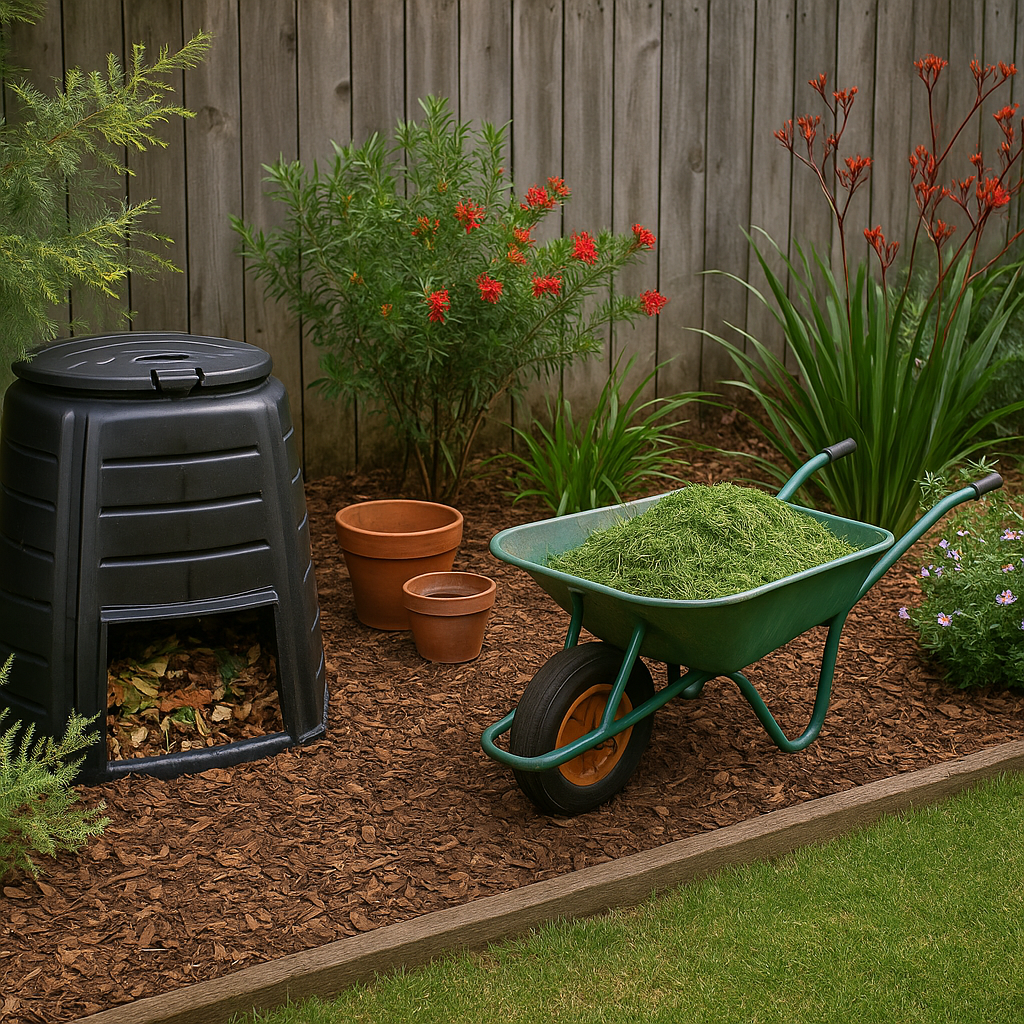Creating and maintaining a vibrant garden is one of life’s simplest joys, but it comes with the responsibility of managing the waste generated from lawn care, pruning, and landscaping. Grass clippings, plant trimmings, and fallen leaves often accumulate faster than we realize. Left unmanaged, this garden waste contributes to overflowing landfills and environmental challenges.
Bright View Landscape embraces a sustainable approach to gardening, promoting eco-conscious techniques that not only reduce waste but also enhance soil fertility, conserve water, and create a healthier environment. This guide explores smart gardening strategies and waste reduction tips to help you transform your yard into a self-sustaining ecosystem.
Composting: Turning Waste into Garden Gold
One of the cornerstones of sustainable gardening is composting. Instead of discarding food scraps and yard debris, Bright View Landscape encourages transforming them into nutrient-rich compost.
Why composting matters:
- Improves soil structure and aeration
- Increases water retention, reducing irrigation needs
- Introduces beneficial microorganisms to the soil
- Decreases reliance on chemical fertilizers
To get started, select a shaded spot for your compost bin or pile. Alternate nitrogen-rich “greens” like kitchen scraps and grass clippings with carbon-rich “browns” such as dry leaves and branches. Keep the mixture moist but not soaked, and turn it occasionally. In a matter of months, you’ll have earthy, rich compost ready to nourish your plants.
For a deeper dive, explore Bright View Landscape with Green Waste Reduction Tips.
Mulching: A Natural Recycling System
Mulching is another effective way to manage garden waste while improving soil health. Simply cover the soil surface with shredded leaves, grass clippings, or wood chips to provide a host of benefits.
Advantages of mulching:
- Retains soil moisture and reduces watering frequency
- Controls weeds by blocking sunlight
- Protects soil from erosion and extreme temperature changes
- Adds nutrients back into the soil as it decomposes
When applying mulch, maintain a depth of 2–4 inches and ensure plant material is free of pests or diseases. By adopting this practice, you recycle waste directly into your garden.
Grasscycling: Smarter Lawn Care
Mowing the lawn often produces bags of clippings, but with grasscycling, you leave clippings on the lawn to decompose naturally. This simple technique feeds nutrients back into the soil and minimizes waste disposal.
Benefits of grasscycling:
- Reduces yard waste collection needs
- Returns nitrogen and potassium to the soil
- Conserves water by retaining soil moisture
- Decreases greenhouse gas emissions from waste transport
Practical tips include mowing only one-third of the grass blade at a time, keeping mower blades sharp, and avoiding mowing wet grass.
Sustainable Lawn and Garden Practices
Bright View Landscape emphasizes proactive strategies to prevent waste before it accumulates.
Key eco-friendly practices include:
- Drought-tolerant landscaping: Choose plants suited to your climate to cut down on watering.
- Organic fertilizers: Opt for natural alternatives that come with less packaging waste.
- Reusable supplies: Select durable pots and trellises rather than disposable materials.
- Manual tools: Rakes and hand clippers not only save energy but also reduce carbon emissions.
By implementing these strategies, your garden becomes more self-sustaining, requiring fewer external resources.
Smart Plant Selection and Yard Design
Design plays a crucial role in reducing waste. By selecting native and perennial plants, you minimize the need for constant replanting, fertilizers, and pest control.
Design tips for waste reduction:
- Group plants with similar sunlight and water needs together
- Incorporate perennials that return each year
- Add native species that thrive with minimal maintenance
Some popular Australian native plants perfect for low-maintenance backyards include Grevillea, Bottlebrush, Kangaroo Paw, and Australian Daisy. These not only reduce waste but also attract pollinators and enhance biodiversity.
For more inspiration, see Bright View Landscape and Pollinator-Friendly Ideas and Bright View Landscape | Designing Pollinator-Friendly Gardens.
Creative Uses for Garden Cuttings
Instead of discarding cuttings, reuse them in innovative ways:
- Compost them to enrich future soil.
- Create plant “tea” by soaking cuttings in water for natural fertilizer.
- Use as mulch to retain soil moisture.
- Propagate new plants to expand your garden affordably.
Propagation is both cost-effective and sustainable, helping homeowners share plants and reduce reliance on nurseries.
Natural Pest Control
Minimizing chemical pesticide use not only prevents waste but also safeguards beneficial organisms. Instead, Bright View Landscape suggests eco-friendly pest control methods.
Strategies include:
- Introducing ladybugs and lacewings as natural predators
- Encouraging birds with feeders and nesting boxes
- Companion planting, such as marigolds to repel pests
- Using diatomaceous earth or neem oil as organic alternatives
These methods maintain ecological balance while reducing chemical waste.
Connecting Landscaping to Broader Sustainability
Smart gardening doesn’t exist in isolation—it connects with sustainable practices in construction and design. For example:
- Heavy landscaping projects may require a material handling trolley to move slabs or heavy loads efficiently.
- Urban outdoor designs often incorporate kerb stone for durability and aesthetic value.
- Indoors, sustainability is carried forward through innovations like Insulating Glass Unit Guide for Architects and Builders.
This demonstrates how Bright View Landscape aligns with broader environmental and architectural goals.
Conclusion
Bright View Landscape proves that sustainable gardening is not only possible but also beneficial for homeowners and the environment. From composting and mulching to grasscycling and natural pest control, these smart techniques help reduce garden waste, conserve resources, and create thriving green spaces.
By adopting these waste reduction strategies and eco-friendly designs, you’re not just maintaining a garden—you’re building a resilient, sustainable ecosystem that supports both biodiversity and community health.

